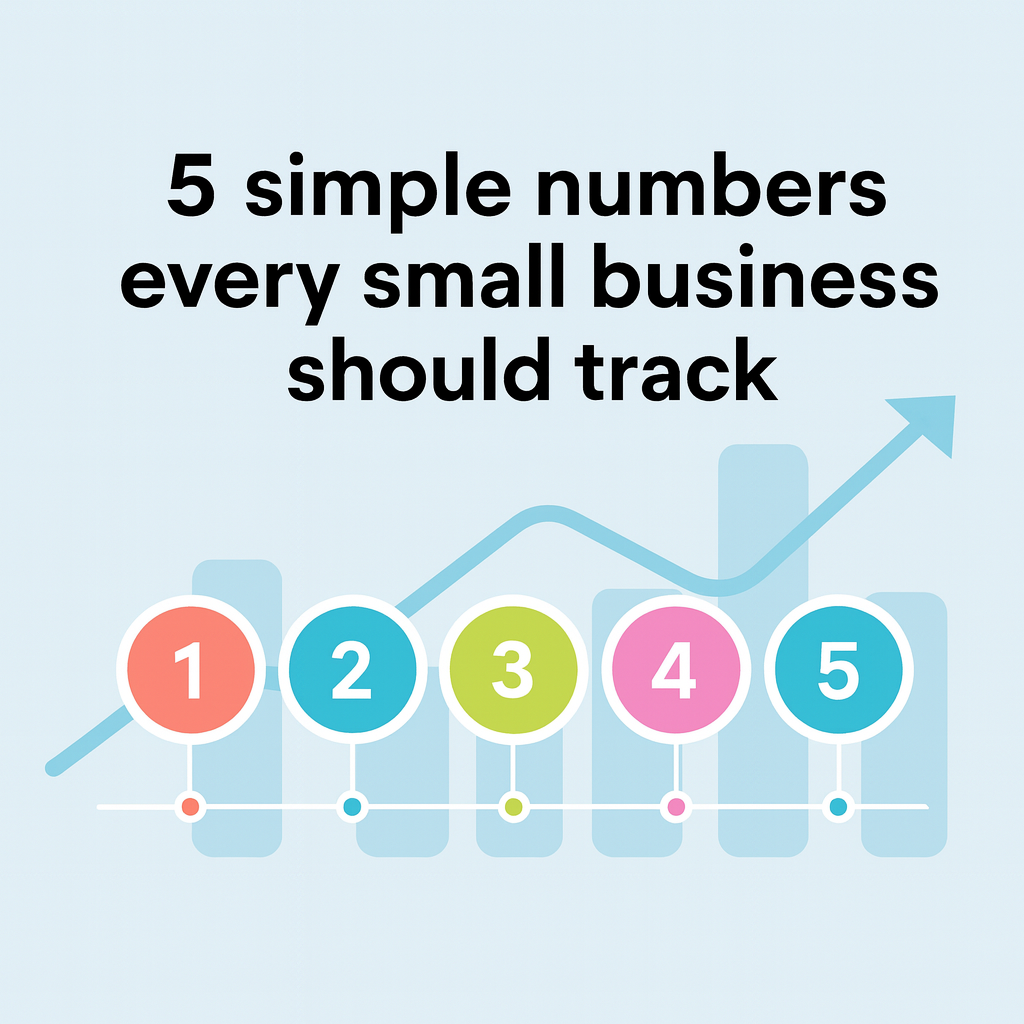5 Simple Numbers Every Small Business Should Track
5 Simple Numbers Every Small Business Should Track

A few years ago, I met a boutique owner who was thrilled that her sales had gone up 20 percent. She had more customers than ever. The problem? She was still barely breaking even. Once we dug into her numbers, we found she was spending more to get customers than those customers were actually spending in return.
That’s why KPIs matter. And no, KPIs (Key Performance Indicators) are not just for Fortune 500 companies with massive spreadsheets and a finance team in matching shirts. They’re simply numbers that tell you whether your business is healthy or in need of a checkup.
Think of them like your car’s dashboard. You do not need to know everything going on under the hood, but you should know if your fuel is low or your engine light is on. These five numbers are the small business version of that dashboard.
1. Customer Acquisition Cost (CAC)
What it is: How much you spend to get a new customer.
Why it matters: If you spend $100 to make a $50 sale, you are not investing in growth, you are paying for very expensive bragging rights.
Plain English: Add up your marketing and sales costs for the month, then divide by how many new customers you got in that same time.
Formula:
CAC = Total marketing and sales costs ÷ Number of new customers
Example: Spend $1,000 in marketing, gain 10 new customers = $100 CAC.
Friendly tip: Track this like you track gas prices. If it starts creeping up, your ads, outreach, or messaging might need a tune-up.
2. Customer Lifetime Value (CLV)
What it is: How much one customer spends with you from the day they first buy to the day they stop.
Why it matters: The first sale is nice. The second, third, and tenth are what make you profitable.
Plain English: Figure out the average purchase amount, multiply by how often a customer buys, then multiply by how many years (or months) they stick around.
Formula:
CLV = Average purchase value × Number of purchases × Average customer lifespan
Story check: A coffee shop might lose money on a first-time customer who buys a $4 latte. But if that customer comes in twice a week for a year, that’s over $400. Multiply that by hundreds of customers, and you see why this matters.
3. Lead-to-Customer Conversion Rate
What it is: The percentage of people who show interest and then actually buy.
Why it matters: Leads are like first dates. Interest is great, but it’s the second date (and the third, and the fourth) that leads to a real relationship.
Plain English: Divide the number of new customers by the number of leads, then multiply by 100 to get the percentage.
Formula:
Conversion Rate (%) = (New customers ÷ Leads) × 100
Example: 10 customers ÷ 100 leads × 100 = 10%.
Friendly tip: If your conversion rate is low, check your follow-up process. Sometimes the problem is not the product, it’s the silence after “I’m interested.”
4. Revenue per Employee (or per Hour)
What it is: How much revenue each employee — or you, if you’re solo — brings in.
Why it matters: Busyness and productivity are not the same thing. You can have a team running around all day and still not be generating enough to cover payroll.
Plain English: Divide your total revenue by your number of employees (or by total hours worked if you want to track your own time).
Formula:
Revenue per Employee = Total revenue ÷ Number of employees
or
Revenue per Hour = Total revenue ÷ Total hours worked
Story check: I once worked with a retail shop where one part-time employee regularly outsold the full-timers. Tracking this helped them rethink scheduling — and profits went up without adding a single hour to payroll.
5. Churn Rate
What it is: The percentage of customers who stop buying from you in a given period.
Why it matters: Imagine filling a bucket with water while there’s a big hole in the bottom. That’s what high churn looks like.
Plain English: Take the number of customers you lost in a month, divide by the number you started with, then multiply by 100.
Formula:
Churn Rate (%) = (Customers lost ÷ Customers at start) × 100
Friendly tip: High churn is a signal to look at customer experience. Sometimes the best marketing money you can spend is on keeping the customers you already have.
Tracking Tips
-
Set aside one hour a month to review these numbers.
-
Use a simple spreadsheet, not a complicated system.
-
When you spot a problem, focus on fixing one KPI at a time.
-
Celebrate wins — even small improvements are progress.
The Bottom Line
KPIs are not there to intimidate you. They are there to guide you. If you track just these five, you’ll have a clear picture of whether you’re coasting toward growth or drifting off course.
Now it’s your turn. Which of these numbers do you already track, and which one feels like your biggest challenge? Drop your answer in the comments — your insight might help another business owner get on the right track.

